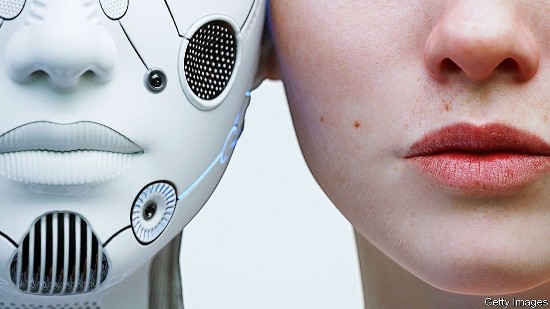I just finished reading “Klara and the Sun,” by Nobel laureate, Kazuo Ishiguro. It’s a story about a robot companion to a young girl suffering from a debilitating illness and is told from the perspective of the companion. This artificial intelligence entity brings observation, compassion, and understanding to the relationship and sees the world through a lens we humans cannot. I highly recommend the book.
And just as I was finishing it Peter Diamandis sent one of his missives about robots as friends and employees. Robots and artificial intelligence are finding their way into both our personal and business lives. Peter sees them as entities not to be feared and has provided the following to reinforce his argument. I hope you enjoy the read.
Camel racing is a centuries-old tradition in the Middle East—think the Kentucky Derby for sheikhs—and it’s one of the richest sports on Earth. However, it’s the jockeys who have changed the most.
Twenty years ago, camels were ridden by children—the lightest possible riders—but general principle, injury, and death led to a humanitarian outcry. So, both the UAE and Qatar banned the practice, replacing children with an even lighter saddle occupant: the robot jockey.
Today, in camel racing, robot jockeys are the norm. Exactly like traditional jockeys, these robotic replacements sit on a saddle, steer with the reins, and prod with a whip. The jockeys are small, about a foot high, and light, weighing between five and eight pounds, with skinny hinged arms.
Of course, my point isn’t that there’s a bevy of entrepreneurial possibilities in camel racing. It’s that robotics, another exponential technology long mired in deception, is now heading for disruption.
According to a report by the Littler Workplace Policy Institute: “Robotics is the fastest growing industry in the world, poised to become the largest in the next decade.” Which is to say, robot jockeys are just the beginning.
Consider Moxie, the brainchild of NASA roboticist Paolo Pirjanian, Co-founder of Embodied, Inc. Moxie is a small, Pixar-like robot with large eyes and a cute, dynamic virtual face. Moxie converses with children in a natural, lifelike manner, becoming a personalized companion to them. You can continuously talk to Moxie (as opposed to simply saying “Hi, Alexa”), and the AI knows to take its turn allowing for a fluid conversation and storytelling.
Importantly, Moxie doesn’t try to be too human or perfect—in fact, that’s where many other robotics companies have failed. Instead, Moxie has a key human-like element: it makes mistakes and learns.
Rather than a full prebuilt chatbot, Moxie has an actual personality and learns over the course of multiple interactions which “unlock” new content and behaviours, further engaging a child in a goal-oriented manner. (If you have young kids, or kids with learning disabilities, please check out Moxie at https://embodied.com/.)
Besides human-like, user-friendly robots, we’re also seeing exponential progress in robotic agility, mobility, and diversity.
Enabled by a new generation of sensors and actuators, and driven by near-unlimited computing and artificial intelligence, there’s a Cambrian explosion in robotics, with species of all sizes, shapes, and modes of mobility crawling out of the muck of the lab and onto the terra firma of the marketplace.
Of course, what is driving the current robotics revolution is the convergence of exponential advances in computation and machine learning using neural networks. A lot of what today’s amazing walking, flying, dancing and talking robots can do is simply a result of cheaper, faster and more ubiquitous computation driving artificial intelligence. The second exponential advance is 3D printing, which is allowing researchers and tinkerers to design, build and test robotic parts faster. Finally, it’s all about advances in networks and sensors to collect and feed data to a robot’s algorithms.
Festo, for one example, has created a robot that flies like a bird. Boston Dynamics makes robots that climb, crawl, jump, and hop, and all while carrying heavy loads. Some of their bots can carry more than a hundred kilogram load. And recently Boston Dynamics put out a video showing their robots making really cool dance moves which seems to be even more impressive than watching them unpack boxes from the back of an 18-wheeler.
Incredible companies like Chef Robotics are putting robots to work in the food industry. The National Restaurant Association reported that in 2017, 37% of its members listed labour recruitment as their top challenge, up from 15% in 2015. This means long lines for you, food deserts with little fresh food, and inconsistent orders (aka not enough guacamole). Chef Robotics believes robots are the best solution to this problem.
What’s the allure of robots? Robots don’t unionize, don’t show up late, and don’t take lunch, and they can work on an assembly line for just a few dollars an hour. And as the cost of labour continues to increase there will come a crossover point when robots will be cheaper and better suited for certain jobs.
Indeed, the market for industrial robots has seen double-digit growth annually since 2013, and is expected to continue to grow 12,3% annually through to 2026.
A 2017 report by the McKinsey Global Institute concludes that almost 50% of tasks done by employees today are at high risk of being taken over by computers (AI and robots). Among these are data collection and processing, representing 51% of the activity in the American economy.
In China, Foxconn, the Chinese electronics manufacturer that builds Apple’s iPhone, made news back in 2013 when the skyrocketing demand for cell phones led to labour disputes, reports of harsh working conditions, even riots and suicides. In the aftermath of these reports, Foxconn has moved to automate 30% of its workforce, cutting 60,000 jobs in 2016 and replacing them with robots, a trend accelerated by the coronavirus pandemic.
Besides replacing blue-collar workforces, robots are invading many more fields. Consider the effect autonomous driving will have on the trucking industry, or surgical robots in healthcare, and companion robots for therapy and eldercare.
“If I were an exponential entrepreneur looking to create tremendous value,” says robotics expert Dan Barry, “I’d look for those jobs that are least enjoyable for humans to do … Given that the global market for unskilled labor is worth many trillions of dollars, I would say this is a huge opportunity.”
Startup infrastructure dedicated specifically to robotics continues to grow—the recent announcement of the Founder Institute partnering with the NASA Ames Research Center and MassRobotics to launch an AI and Robotics-focused accelerator is just one example.
At the same time, the continued exponential growth of AI, robotics, and other technologies, along with our improving understanding of human nature, are moving us to a world of true robotic colleagues and friends.









